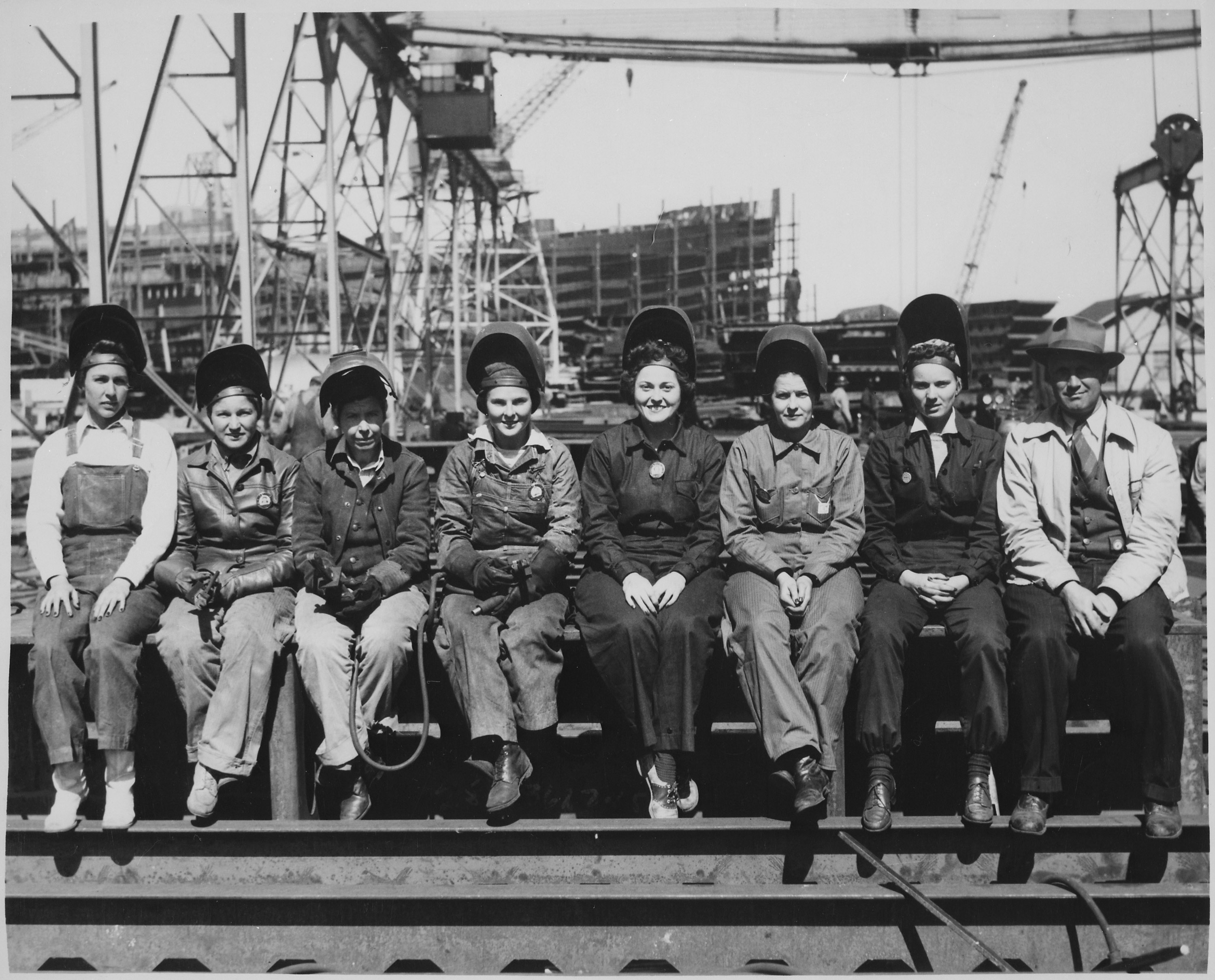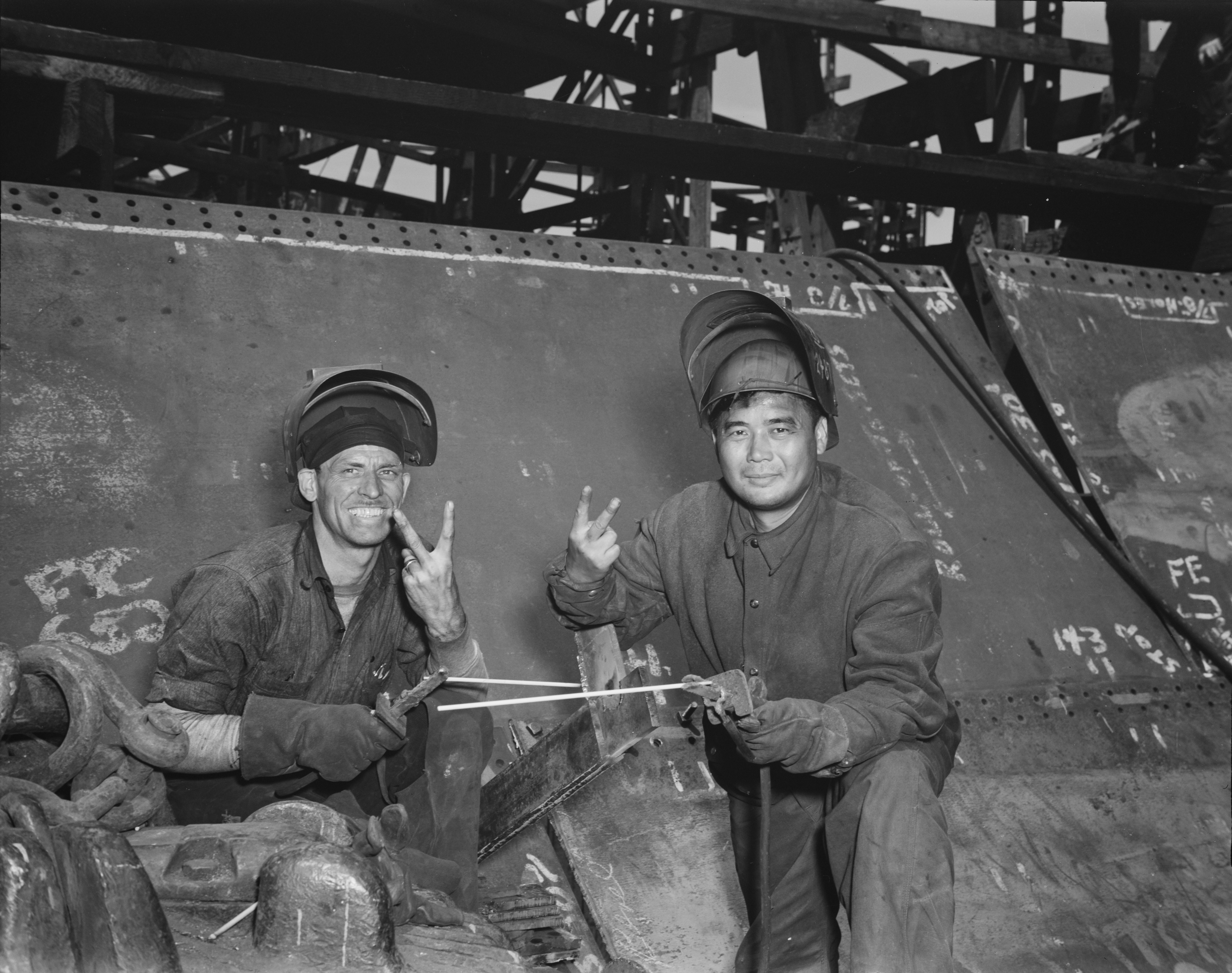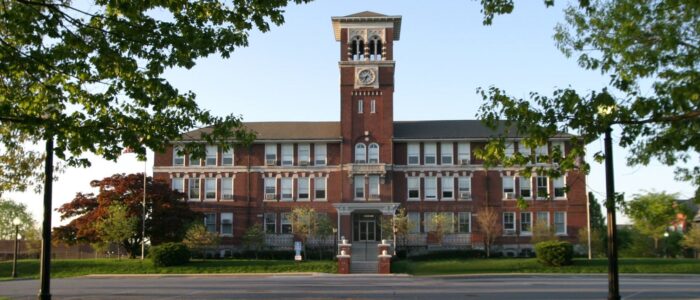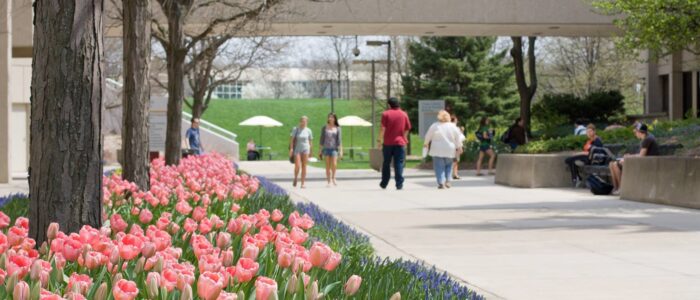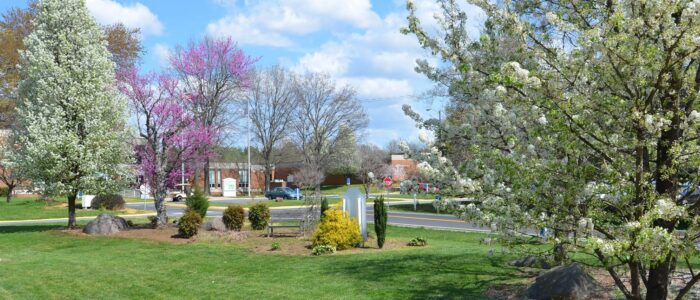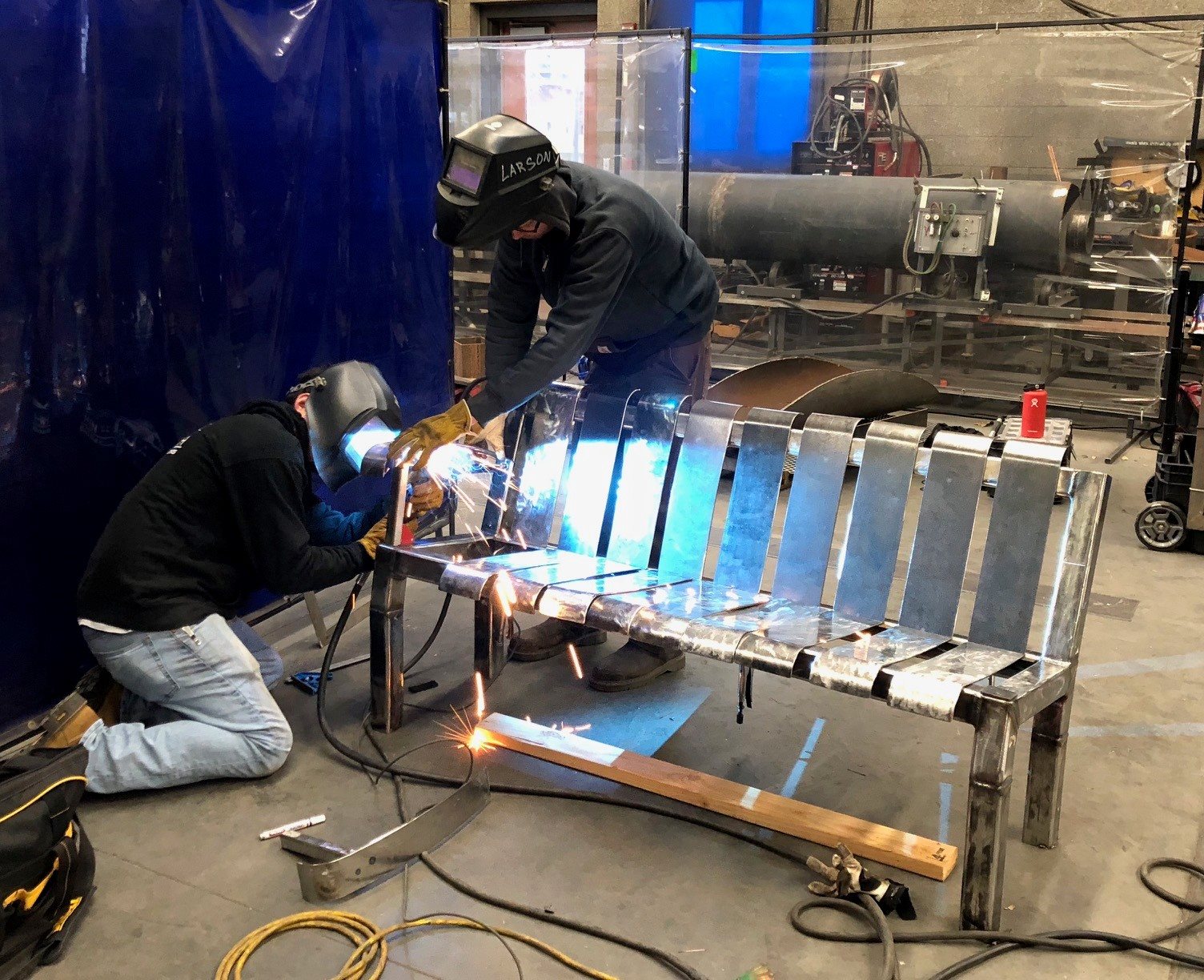The American Welding Society (AWS) is an ANSI-accredited standards developer that produces consensus documents that are significant for the education industry for several reasons:
- The education facilities industry is the largest non-residential building construction market in the United States (about $80 billion annually). All buildings and infrastructure require safe and effective joining of metal parts in structural and piping systems. Some research universities have full-time staff to perform welding; or at least staff that coordinates outside contractors to do piece work and repairs around campus.
- Welding is a trade skill and is taught in many high schools, community colleges and technical schools. From an academic standpoint, students whose work product shows up in all industries — airline, defense, transportation, medical equipment, etc. — need a solid understanding of the standard of care set by the the AWS suite.
- Welding is popular in the creative arts and taught in some academic departments and/or fine art schools.
The AWI has prepared one of its consensus documents — AWS D16.5M/D16.5-201X, Training Guide for Robotic Arc Welding Personnel — for public comment. This document provides technical information necessary to train personnel in the safe and effective use of industrial welding robots and welding robot systems. The training guide includes a summary of the requisite education resources required for training and the emphasis will be placed on the training individuals in accordance with the principles of the AWS D16.4 Certified Robot Arc Welder program (CRAW). The training guide is designed for use by all robot arc welding personnel and it is not intended to be used exclusively in support of the CRAW program.
Information about how to participate is linked below:
American Welding Society Standards Home Page
No public consultations are open at this time.
We do not advocate in pedagogic standards but since this commenting opportunity crossed our radar we are simply passing it on. Keep in mind that welding is a trade essential for building, operating and maintaining the emergent #SmartCampus so this commenting opportunity should interest technical school and community college faculty who are stakeholders in this space.
You may communicate directly with Stephen Hedrick at AWS, (305) 443-9353, steveh@aws.org. Any comments on the start of the revision should be send to your comments to portela@aws.org with copy to psa@ansi.org. AWS hosts a number of conferences around the United States during which time technical committees writing this and other standards will likely meet (CLICK HERE for information on the Annual Conference in Houston, October 2019)
We are happy to answer general questions and/or offer guidance to students, faculty and staff about how to participate in the AWS process any day at 11 AM Eastern time. CLICK HERE to log in to our live daily webcasts.
Issue: [Various]
Category: Architectural & Structural
Contact: Eric Albert, Mike Anthony, Richard Robben
#StandardsTexas
LEARN MORE:
The AWS Worldskills USA Final Weld Off Competition is taking place at the Alabama Robotics Technology Park this week in Tanner, Alabama!
Best of luck to our competitors Raymond Papierniak from Michigan, Ryan Fincher from Georgia, and Jordan Wynn from Utah. pic.twitter.com/WyYKKiLoEY
— AWS.org (@AWSHQ) February 19, 2019
Posted December 16th
The American Welding Society (AWS) is an ANSI-accredited standards developer that produces consensus documents that are significant for the education industry for several reasons:
- The education facilities industry is the largest non-residential building construction market in the United States (about $80 billion annually). All buildings and infrastructure require safe and effective joining of metal parts in structural and piping systems. Some research universities have full-time staff to perform welding; or at least staff that coordinates outside contractors to do piece work and repairs around campus.
- Welding is a trade skill and is taught in many high schools, community colleges and technical schools. From an academic standpoint, students whose work product shows up in all industries — airline, defense, transportation, medical equipment, etc. — need a solid understanding of the standard of care set by the the AWS suite.
- Welding is popular in the creative arts and taught in some academic departments and/or fine art schools.
ANSI’s due process framework requires that when an accredited standards developer undertakes a new standardization project, or launches a new revision cycle of an existing document, the entire standards federation receive notice in order to limit conflict or overlap with another standards developer. In effect, the ANSI PINs procedure is not unlike the starting point of government legislative processes; though, arguably more transparent:
ANSI PINS Form: Project Initiation Notification System
The AWS has posted a project initiation notice of a revision to one of its standards: WS A5.31M/A5.31: Specification for Fluxes for Brazing and Braze Welding. From the project prospectus:
Project Need: This specification prescribes the requirements for the classification of brazing fluxes used with brazing or brazewelding filler metals, such as those classified in AWS A5.8M/A5.8, Specification for Filler Metals for Brazing and Braze Welding.
Stakeholders: Producers, users, consultants, educators, and general interest.
Scope: Eighteen fluxes for brazing and braze welding are classified according to the filler metal, form, and activity temperature range. Classification is in accordance with a classification system that employs the designator “FB” to indicate fluxes for brazing and braze-welding applications. In addition to selected tests for each classification, major topics include general requirements, testing procedures, and packaging requirements. An annex listing general application guidelines is included. This specification makes use of both the International System of Units (SI) and U.S. Customary Units. The measurements may not be exact equivalents; therefore, each system shall be used independently.
No comments are due at this time; though there may be after 30-45 days of the formal announcement made on December 14th (CLICK HERE for link to a backgrounder on PINS procedure). Generally speaking, revisions of existing standards by familiar standards developers usually present no conflicts with others but you may may track the progress of the revision here:
American Welding Society Standards Home Page
You may communicate directly with Stephen Hedrick at AWS, (305) 443-9353, steveh@aws.org. Any comments on the start of the revision should be send to your comments to portela@aws.org with copy to psa@ansi.org. AWS hosts a number of conferences around the United States during which time technical committees writing this and other standards will likely meet (CLICK HERE for information on the Annual Conference in Houston, October 2019)
We are happy to answer general questions and/or offer guidance to students, faculty and staff about how to participate in the AWS process any day at 11 AM Eastern time. CLICK HERE to log in to our live daily webcasts.
Issue: [Various]
Category: Architectural & Structural
Contact: Eric Albert, Mike Anthony, Richard Robben
Source: ANSI Standards Action Page 20
With the power of extreme flames in your hands, safety can't be overlooked. #Welding #HotWork #Cutting #Fire #Explosion @NFPA https://t.co/HQ737l8lEN
— ANSI (@ansidotorg) December 22, 2018
Posted September 4, 2018
The American Welding Society (AWS) is an ANSI-accredited standards developer that produces consensus documents that should be of interest to the education industry for several reasons:
- The education facilities industry is the largest non-residential building construction market in the United States with facilities that require safe and effective joining of metal parts in structural and piping systems. Some research universities have full-time staff to perform welding; or at least coordinate outside contractors to do piece work and repairs around campus.
- Welding is a trade skill in the broader construction industry and is taught in many community colleges and technical schools.
- Welding is also popular in the creative arts and taught in some academic departments and/or art schools.
- Welding accreditation and certification — like other skilled trades — is present in some state labor regulations. Labor regulations are sensitive issues everywhere.
In all applications welding must be performed safely and economically. A great deal of campus infrastructure — and safe and sustainable cities everywhere — depend upon the art and science of metalwork.
The AWS has released redlines for public comment for nine of its standards — eight of which with “Standard Welding Procedure Specification for Shielded Metal Arc Welding of Carbon Steel” and of which deals with the “Specification for Transparent Welding Curtains and Screens”. The complete list of candidate revisions are available in this week’s ANSI Standards Action | Pages 8 through 10.
Comments are due October 15th.
American Welding Society Standards Home Page
You may communicate directly with Stephen Hedrick at AWS, (305) 443-9353, steveh@aws.org. Send your comments to pportela@aws.org with copy to psa@ansi.org.
We are happy to answer general questions and/or offer guidance to students, faculty and staff about how to participate in the AWS process any day at 11 AM Eastern time. CLICK HERE to log in to our live daily webcasts.
Issue: [Various]
Category: Architectural & Structural
Contact: Mike Anthony, Richard Robben



